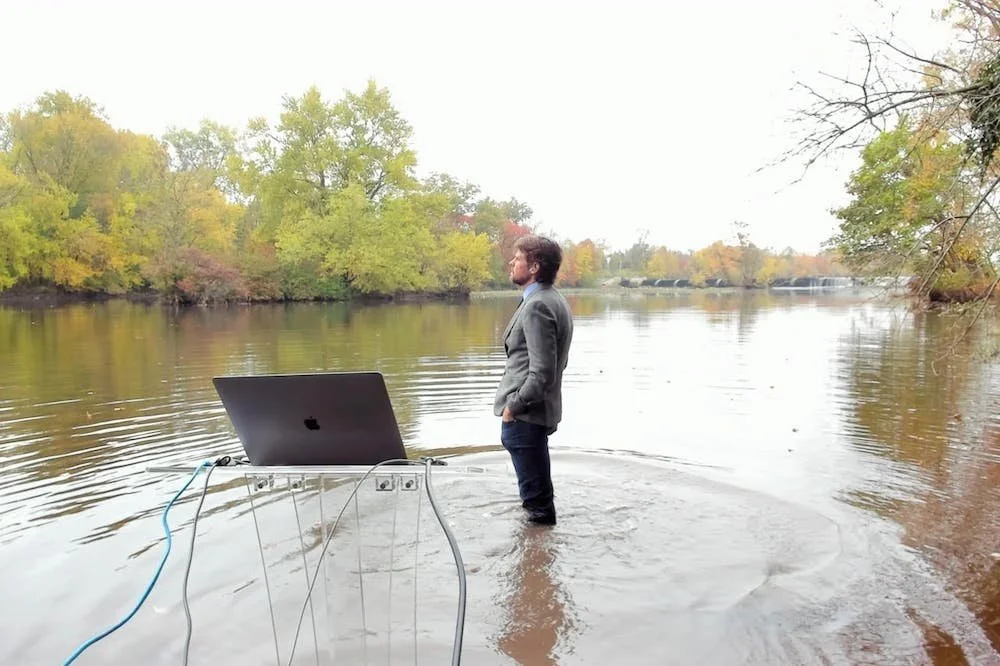Professor Pringle gets inventive with online teaching
Professor Rob Pringle in the water near his house.
For Professor Rob Pringle’s 56 students, joining Zoom to find their professor lecturing from his basement would be a lot more surprising than seeing him discuss biodiversity while knee-deep in a lake.
Pringle’s course preceded Pringle, who began teaching at the University in 2012. He virtually redesigned the course, basing it off of his own studies as an undergraduate.
“[It’s] the hybrid of all the things I liked best about my college courses,” he said. “It’s my baby, so I love it.”
The course focuses on understanding natural systems, ecological theory, and the distribution of biodiversity in what Pringle described as an “era of unprecedented human disruption to the environment.”
“A lot of it is about ‘get outside wherever you’re at and explore,’” Pringle explained.
Pringle’s inventive decision to lecture outdoors was motivated by a handful of challenges brought on by the virtual semester.
“Professor Pringle is like a good Stevie Wonder song. His lectures will always stand out even amongst the crème de la crème.”
Each lecture, Pringle attempts to teach from a different part of his yard. As Sahin described, students are greeted on Zoom by “a cheery Professor Pringle, jamming out in a new location outside … to some music that sets the mood of the whole class.”
According to his students, Pringle has completed the cycle by inspiring them with his enthusiasm, creativity, and passion. Sahin wrote that he expects to one day share with his children “all the wonderful stories of my memorable time in Professor Pringle’s class.”

